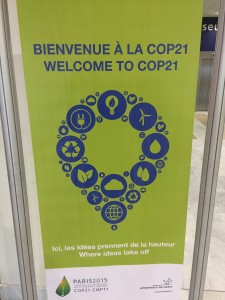By Dr. Adam Fenech
 I was a young graduate student back in 1992 when I attended the United Nations’ Earth Summit in Rio de Janeiro, Brazil. That conference was the beginning of an international political response to addressing the issue of global warming through the adoption of the agreement titled the United Nations’ Framework Convention on Climate Change. Almost all of the 195 countries of the world have signed this agreement aimed at stabilising atmospheric concentrations of greenhouse gases to avoid “dangerous human interference with the climate system.” And now 23 years later, we all know that we have not been able to reduce our appetite for burning fossil fuels to create energy, and that we are beginning to feel the effects of climate change that are rapidly advancing to a dangerous level.
I was a young graduate student back in 1992 when I attended the United Nations’ Earth Summit in Rio de Janeiro, Brazil. That conference was the beginning of an international political response to addressing the issue of global warming through the adoption of the agreement titled the United Nations’ Framework Convention on Climate Change. Almost all of the 195 countries of the world have signed this agreement aimed at stabilising atmospheric concentrations of greenhouse gases to avoid “dangerous human interference with the climate system.” And now 23 years later, we all know that we have not been able to reduce our appetite for burning fossil fuels to create energy, and that we are beginning to feel the effects of climate change that are rapidly advancing to a dangerous level.
Next week, the 2015 Paris Climate Conference will attract close to 50,000 participants including 25,000 official delegates from government, intergovernmental organisations, UN agencies, NGOs and civil society. It will be the first time in over 20 years of United Nations negotiations to result in a legally binding and universal agreement on climate with the aim of keeping global warming below a dangerous level of 2°C.
The year 2015 is shaping up to be the warmest year on record around the globe. While we here on Prince Edward Island experienced a severely cold winter, almost everywhere else temperatures have been absurdly warm. Global temperatures for the month of October this year became the hottest October on record almost 1°C above normal, an absolutely incredible amount for weather records taken since 1880. October was the eighth month this year when a heat record was set, with only January and April not setting records. That’s a record number of broken records in any year. 2015 will be the hottest year on record breaking the record set last year in 2014. Since the year 2000, global monthly heat records have been broken 32 times, yet the last time a monthly cold record was set was in 1916. My research at UPEI has shown that our province has also warmed substantially over the past 140 years, and is getting drier as well.
The climate meeting in Paris is seen as the last “do or die” chance at getting the world’s greenhouse gas emissions under control to limit the human increase in global average temperature to 2°C. It is recognized by scientists that humans have raised global temperatures by 0.8°C since the industrial revolution, and that even if humans stopped increasing greenhouse gases now, global temperatures would likely rise another 0.8 degrees, as the previously released greenhouse gases continue to overheat the atmosphere due to their long lifetimes in the atmosphere as long as hundreds of years. So humans have committed the planet to a global temperature increase of 1.6°C already, leaving just 0.4°C wiggle room to keep temperatures below the dangerous level of 2°C. To give us a 4 in 5 chance of doing so (so not guaranteed), humans need to release less than 565 more gigatons of carbon dioxide equivalents of greenhouse gases by 2050 to stay below 2°C. Our greenhouse gas emissions keep growing by roughly 3 percent per year – and at that rate, we’ll reach the 565-gigaton allowance in 13 years or by the year 2028.
That is, unless we are able to make an agreement to provide some significant greenhouse gas emission reduction targets in Paris, and then meet them. Presently, 178 countries have submitted their intended plans for greenhouse gas reductions (the country of Nuie tabled their intentions yesterday). So far, these do not total up to a reduction of greenhouse gas emissions that will keep the global temperature increases below the dangerous level. But there are two weeks of intense negotiations ahead.
I’ll be there in Paris next week. Terrorism has limited the number of conference activities and security will be tight. But I will be there to advance a report I co-authored with a group of 60+ Canadian scholars titled Sustainable Canada Dialogues that produced a consensus on science-based, viable solutions for greenhouse gas reduction. The report provides 10 policies that can kick-start Canada’s transition toward a low-carbon economy and sustainable society. We highlighted the opportunities, for jobs and the economy, stemming from actively pursuing low-carbon electricity, evolving smart urban design, creating participatory and open governance institutions and rising to the challenge of something tantamount to a total transportation revolution. I know I’ll have an attentive audience.

